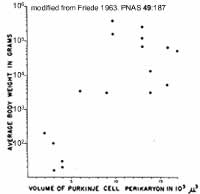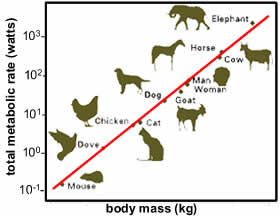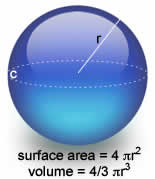You have a lot of questions rolled up into one, and we will have to unpack them.
To get a sensible answer, we have to consider the problem on a per cell basis.
Smaller organisms have fewer cells, but these cells are more or less the same size as those in larger organisms.
 graph
1
graph
1  graph
2
graph
2 